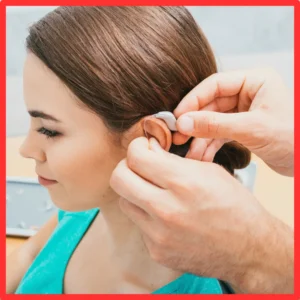Understanding Hearing Aid Costs: What You Need to Know
If you’re considering hearing aids, one of your first questions might be, “What should I know about hearing aid costs?” The answer depends on various factors like technology, services, and features. Here, we’ll break down what you can expect regarding features and value.

What Affects Hearing Aid Costs?
Hearing aid costs vary widely due to several key factors. Each element plays a significant role in determining the final price:
1. Technology Level
The most significant driver of hearing aid costs is the level of technology integrated into the device. Basic hearing aids amplify sound, but advanced models offer much more. Premium hearing aids often come with:
- Bluetooth Connectivity: Allows you to stream audio directly from your phone, TV, or other devices. This feature enables users to make phone calls, listen to music, or join virtual meetings without needing extra equipment.
- Artificial Intelligence (AI): Some high-end hearing aids use AI to adjust automatically based on your environment. This ensures better sound clarity in noisy or changing settings. AI also helps the hearing aids “learn” your preferences, making them more tailored to your needs over time.
- Noise Reduction and Speech Enhancement: Advanced algorithms filter out background noise while enhancing speech, making conversations in noisy environments clearer.
- Directional Microphones: These focus on the sound in front of you while reducing noise from other directions. This feature is particularly useful in crowded places like restaurants or social gatherings.
- Rechargeable Batteries: Many premium models now come with built-in rechargeable batteries, eliminating the need for frequent battery replacements.
These advanced features improve your overall hearing experience, but they come at a higher cost due to the complex engineering and research involved.
2. Bundled Services
Most hearing aids come with bundled services, which means the price you pay includes professional care and support. These services are crucial to ensure your hearing aids work optimally. Typically, bundled services include:
- Initial Fitting and Programming: Your audiologist will fit the hearing aids and program them to match your specific hearing needs based on your audiogram.
- Follow-Up Visits: Adjustments are often necessary after you’ve worn the devices for some time. Follow-up visits ensure your hearing aids continue to perform at their best.
- Repairs and Maintenance: Bundled services usually cover repairs and routine maintenance, such as cleaning and checking for issues like wax buildup.
- Warranty Coverage: Most hearing aids come with a manufacturer’s warranty, covering repairs and replacements for a certain period.
These bundled services add value but can increase the overall price. However, they provide essential support, ensuring that your hearing aids are properly adjusted and maintained for long-term use.
3. Brand and Model
Higher-end hearing aid brands like Phonak, Starkey, ReSound, and Unitron offer advanced features and customization options, which often result in higher costs. These premium brands invest significantly in research and development to bring cutting-edge technology to their devices. Here’s a look at what sets each of these brands apart:
Phonak
Phonak is known for its high-performing hearing aids that deliver superior sound quality, especially in challenging environments. Their models often feature advanced noise reduction, speech enhancement, and Bluetooth connectivity. Phonak also offers rechargeable options and models tailored for individuals with profound hearing loss. Their AutoSense OS technology automatically adapts to different listening environments, providing a seamless experience.
Starkey
Starkey stands out for integrating artificial intelligence (AI) and health-monitoring features in their hearing aids. Starkey’s Edge AI model, for example, can track physical activity, detect falls, and provide language translation—all through the hearing aid. These features, along with rechargeable batteries and Bluetooth streaming, make Starkey an excellent choice for tech-savvy users who want more than just hearing amplification.
ReSound
ReSound focuses on creating hearing aids that provide natural sound quality and connectivity. Their devices offer excellent compatibility with smartphones, allowing users to control settings and stream audio directly from their phones. ReSound’s models are known for their binaural hearing solutions, which provide better localization of sound, making it easier to distinguish speech from background noise. ReSound also offers a variety of styles, from completely-in-canal (CIC) devices to behind-the-ear (BTE) models.
Unitron
Unitron hearing aids are designed with flexibility in mind, allowing users to upgrade the technology level without buying a new device. Their Tempus and Discover platforms focus on enhancing speech clarity in noisy environments, which is especially helpful for social settings. Unitron also offers sleek, discreet designs with features like automatic adaptation to different sound environments and rechargeable options. Their unique “Flex” program allows users to try out different technology levels before committing to a purchase.
Each of these brands offers specialized models and features, making them ideal for different hearing needs. While they come with a higher price tag, they deliver unmatched performance, comfort, and durability.
4. Customization Options
Many hearing aids require custom molds to fit your ear canal, especially smaller, more discreet models. Customization enhances comfort and sound quality, but it adds to the cost. The more personalized your device is, the higher the price, as it requires precise measurements and manufacturing to meet your individual needs.

What’s Included in the Price?
The price of hearing aids typically includes much more than just the device itself. Most hearing aids are sold with a bundle of services designed to ensure that your hearing aids meet your unique needs. Here’s what you can expect:
- Initial Fitting and Programming: Audiologists customize your hearing aids to suit your specific hearing loss. They adjust the settings based on your audiogram, ensuring the devices work effectively from day one.
- Follow-Up Visits: After your initial fitting, follow-up appointments are essential for making adjustments. As you wear your hearing aids in different environments, you might need fine-tuning to improve their performance.
- Repairs and Maintenance: Many hearing aid packages include regular maintenance and necessary repairs for a set period, ensuring your hearing aids last longer and function optimally.
- Warranty Coverage: Most hearing aids come with a warranty that covers defects or issues with the devices for one to three years, providing peace of mind and protection against unexpected costs.
These bundled services are crucial to the long-term success of your hearing aids. They help ensure your devices are comfortable, effective, and maintained over time.
The Range of Hearing Aid Costs
Hearing aids can vary significantly in price, depending on the features and services included. Here’s a general breakdown of what you can expect:
- Basic Models: Priced around $950 to $1,500 per device, basic models provide essential amplification and simple sound processing. While they lack advanced features, they are still effective in improving hearing for quieter environments.
- Mid-Range Models: Costing between $1,500 and $2,500 per device, mid-range models offer better sound quality and additional features like noise reduction, speech enhancement, and directional microphones. They provide a more refined hearing experience in various environments.
- Premium Models: Priced between $2,500 and $3,500 per device, premium models are equipped with cutting-edge technology. Features like Bluetooth connectivity, AI-driven sound adjustments, and rechargeable batteries make these models ideal for users with active lifestyles and diverse hearing needs.
While premium models come with a higher price tag, their advanced features and superior sound quality can make a significant difference in your overall hearing experience.
Factors That Drive Hearing Aid Prices
Several factors contribute to the overall cost of hearing aids. Understanding these can help you make an informed decision about which device is right for you:
- Research and Development: The hearing aid industry invests heavily in research to improve sound quality, battery life, and comfort. These improvements are reflected in the price, as advanced models often incorporate the latest technologies.
- Professional Services: Audiologists play a crucial role in fitting and adjusting your hearing aids. These services are bundled into the cost to ensure that your hearing aids are customized to your unique needs.
- Customization and Comfort: Custom-made hearing aids that fit your ear perfectly tend to cost more due to the precise measurements and manufacturing process required. Customization improves both the performance and comfort of your hearing aids, making them worth the added investment for many users.
- Brand and Manufacturing: Premium brands often charge more due to their reputation for quality and durability. Additionally, some manufacturers have exclusive features that can justify a higher price.
By understanding the factors behind hearing aid pricing, you can better evaluate which features and services are worth investing in your specific hearing needs.
How to Save on Hearing Aids
While hearing aids can be expensive, there are ways to reduce the cost:
- Use health savings accounts (HSA) or flexible savings accounts (FSA) to pay with pre-tax income.
- Explore insurance options, like Medicare Part C, which may offer some coverage.
- Consider over-the-counter (OTC) hearing aids, which can be more affordable.
- Shop at wholesale clubs like Costco, which often offer lower prices.
Saving on hearing aids requires careful planning, but finding options that fit your budget is possible.

Are Expensive Hearing Aids Worth It?
Higher-priced hearing aids come with advanced features like Bluetooth connectivity, machine learning, and improved sound clarity. If you rely on technology to connect to your phone, TV, or computer, premium hearing aids may be worth the investment. However, basic models still offer solid performance for everyday listening.
Finding the Right Hearing Aid for You
Choosing the right hearing aid depends on your lifestyle, budget, and hearing needs. Basic models might suit simple environments, while advanced models offer more flexibility. The key is understanding what features matter most to you and finding a model that fits your budget. If you’re unsure, consult with your audiologist to explore your options.
We’re here to help you find the best solution for your hearing needs. Contact Stanford Hearing today to learn more about our hearing aid options and pricing!
